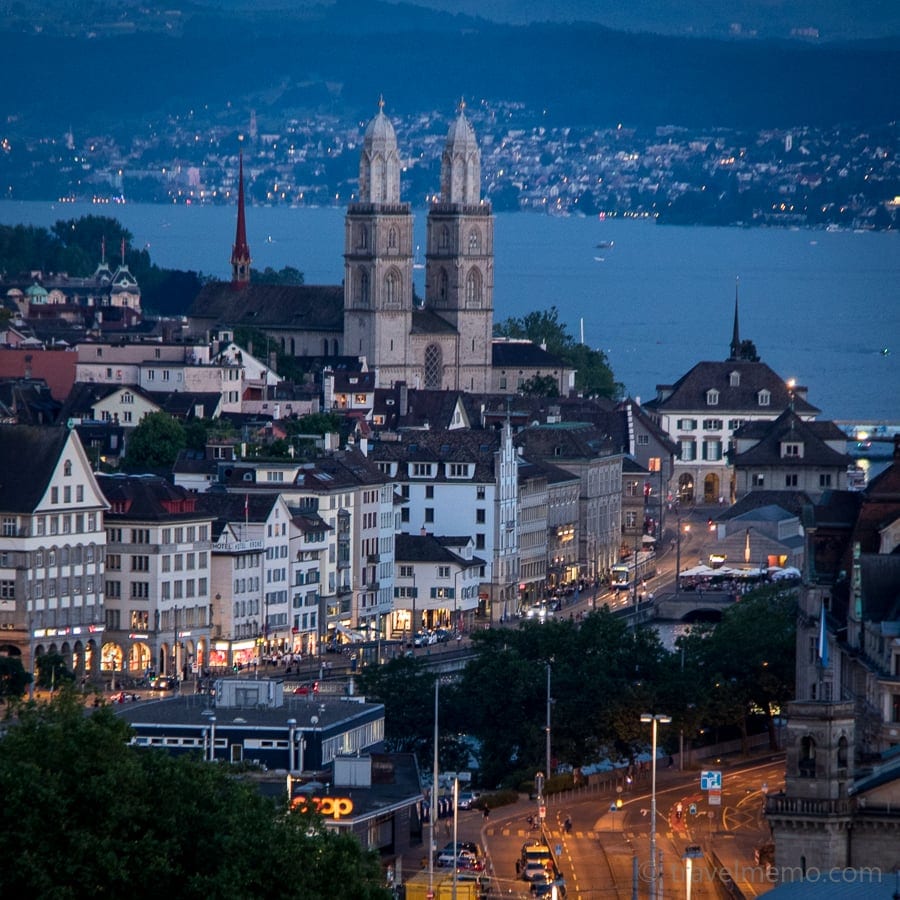On her trip to Switzerland, Justine Tyerman spends two days in Zurich and explores the city with its 2000 years of history on foot.
Zurich – 2000 years of history at a glance
Zürich’s origins date back over 2000 years to 15BC when the Roman post of Turicum was founded there as a customs station to oversee goods travelling to and from Italy. The first mention of Zurich as a place name appeared in the 9th century and by the 10th century, the town had acquired the status of a city.
In the 16th century, Zurich became the centre of the Swiss Protestant Reformation and by the 19th century, the city had grown into the commercial and financial centre of Switzerland.

Strategically located at the narrowest point of the Limmat River, the hotel Storchen’s fortunes prospered along with the city. It was the logical site for the construction of the first bridge over the river built in 1375. Commonly known as “Gmüesbrugg”, Swiss German for ‘vegetable bridge’, it was so named for the medieval market on the bridge. It’s known too as the Rathaus Brücke (Town Hall Bridge) because it leads to Zurich’s Town Hall or Rathaus.
The Storchen was also at the crossroads of trade routes to Italy and Germany where ships set sail carrying merchandise to ports around the world. Early on, Zurich established itself as a centre for commerce and is now one of the world’s most important financial centres. It’s Switzerland’s largest city with over 400,000 inhabitants.
Exploring Zurich on foot
Much to our delight, we discovered most of Zürich’s historic and cultural sights lie within easy walking distance of our hotel, the renowned Storchen.
In a couple of hours, we were able to take in the picturesque cobbled alleyways behind the hotel, the streets and squares of the vehicle-free Rennweg in the Old Town, the 1.4km Bahnhofstrasse shopping street with elegant shops such as Hermès, Giorgio Armani, Gucci, Bulgari, and Chanel, and the world-famous financial centre on Paradeplatz, the home to Credit Suisse and UBS.
The hotel is literally encircled by the city’s most beautiful churches – the landmark Grossmünster with its characteristic ‘salt and pepper’ towers, the centre of the Swiss Reformation in the 16th century; Fraumünster, famous for its magnificent 9.8m tall stained glass windows by Marc Chagall and Augusto Giacometti; and the oldest, St. Peterskirche, dating back to the 9th century, which has the largest clock face in Europe, a staggering 8.7m in diameter. The minute hand is 4m long!
At 7 pm on Sunday, the church bells began chiming in a competition for the loudest, longest and most complicated sequence. At their peak, they reached an ear-splitting crescendo and then gradually fell silent, leaving my ears ringing in the aftermath.
The Swiss National Museum, one of the most important art museums of cultural history in Europe, is a most impressive building.
Next to the Zurich’s main railway station, the museum was built in 1898 in the style of a French Renaissance chateau with many towers, turrets, courtyards and a lovely park on the peninsula between the rivers Sihl and Limmat. The museum provides a fascinating overview of Swiss history, identity and the historical, social and cultural diversity of the country.
The Lindenhof, the site of a 4th century Roman castle, is an excellent vantage point overlooking the Limmat River and the Old Town. The elevated square is a popular recreation and gathering spot and has a giant chess board, the scene of a tense contest while we were there.
Below the Lindenhof is the exquisite Schipfe or artisan’s street on the Limmat riverbank, one of the oldest quarters in Zurich. During the Middle Ages, boats docked there to unload silk, gold and food, and from the 16th century, it became the centre of the silk industry and boatbuilding.
Zurich’s Rathaus or Town Hall, built from 1694-1698, is an eye-catching building. It sits right in the Limmat and is joined to the pedestrian-only Rathaus Brücke (Town Hall Bridge) which leads back to the Storchen.
Augustinergasse, a historic, narrow street with many colourful painted bay windows, is another lovely area close to the hotel. And across the river, the Old Town pedestrian quarters of Niederdorf and Oberdorf have enticing shops hidden in little alleyways. After dark, Niederdorf is a popular nightlife district with bars and street artists.
We enjoyed strolling around the city at night, crisscrossing the Limmat on the river’s many bridges, mesmerised by the reflections of the bright lights in the calm river. One evening, we visited the grand Opera House, one of the best in the world, which was the glittering venue for an international film festival during our stay.
You are never far from the water in Zurich – the city is dissected by the Limmat and the Sihl Rivers which flow from Lake Zurich, joining at Platzspitz. The lake is a popular place for excursions, especially aboard the two historic paddle-steamers. On a clear day, the snow-covered Alps rising in the distance above the sparkling blue lake is a breath-taking sight.
And you don’t need to buy bottled water in Zurich. It has the most fountains of any city in the world with around 1200 drinking water fountains, many of them works of art.